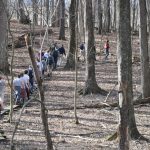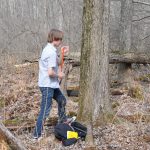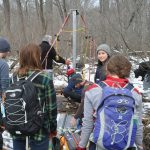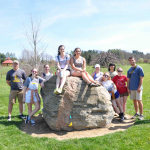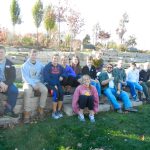Preparation Questions (Spring 2019)
Preparation Questions will be posted here for each class – you are responsible for answering them and writing out any questions that you have on the readings of course material. The answers can be found in the readings and/or on the web. I may gather these as a quiz occasionally.
For the week of 22 April:
Watch this youbue by:Jim White who will be out Osgood speaker next year. This is a good summary of the course and a review.
For the week of 22 April:
1 – We will dedicate the time to getting the report finished and a paper formatted. This is hard work – we will also donate the Larix Decidua to the ITRDB.
2 – What is the ITRDB?
3 – This is the article that seems like it has some relevance of what we are finding. Can we find others?
4 – Be sure to go to see our seniors an there posters – ask the Geologists the tough questions:
for Victoria: How would you characterize the MWP based on your work?
for Ric: What was Iceland Glaciated and how would you date the glacier record that presumably your volcanic rocks were intruded into?
for Tommy: What is the role of climate in the increased runoff and pluvial in your study region? What is the natural variability in that region over time and how is it changing?
For the week of 15 April:
1 – What is the structure of the past 2k years of climate – start with Bond and keep in mind Milankovich.
2 – What is the Antique Little Ice Age? What are the forcing.
3 – What is the Little Ice Age? When where and why?
For the week of 8 April:
1 – Get those cores measured – so far the correlations are good so the pressure is on to make this chronology the best it can be.
2 -Weds. and Friday we will bring in study of the lat 2000 year of climate variability – this is the reading.
For the week of a April:
1 – Trip to Byrd Polar Monday – leave at 11:30 and return at 4:30. Go to their website and learn about what they do.
2 – Exam Friday.
3 – Work on measuring the cores from the European Larch site.
For the week of 25 March:
1 – Outline the principles of tree-ring research as outlined by Speer and in class – we will have a quiz on them on Friday.
2 – We will be developing a tree – ring chronology from the European Larch trees in Secrest Arboretum – where is the Arboretum? and why would we do this work?
3 – Reading this article may help in answering question 2 above.
For the week of 4 March:
1 – When was the Holocene?
2 – Why and how do we calibrate radiocarbon ages – we will do an exercise in calibration during the lab this week – bring your laptops or use those in the tree-ring lab. The website is here.
3 – The calibration for tree-rings goes back about 11.8 ka and then which records extend it further back in time?
4 – The YD and the 8.2 ka event are now accepted as divisions of the Holocene. What is the other division now under discussion that might ultimately be accepted to differentiate the late and middle Holocene?
We will have a quiz Friday.
For the week of 25 February:
1 – The transition out of the last ice age was not smooth – know the names and timing of the Bolling-Allerod, the Younger Dryas.
2 – What is an abrupt climate change and what are the various ways they are explained. How did the Younger Dryas happen?
For the week of 18 February:
1 – Good job on the exam overall.
2 – What is the equation of a line – we will need this in lab. How can we use the equation of a line to relate tree-ring to climate data?
3 – We will continue with the Ice Ages for a bit and focus on the dating of some of the individual records. How are ice cores dated?
For the week of 11 February:
1 – Exam on Friday.- Here is the review ppt. for the exam
2 – Go over the three Milankovitch cycles and how they change insolation over time.
3 – How might THC have played a role in the origin of the Ice Ages?
For the week of 4 February:
1 – What can leave stomata tell us about past carbon dioxide levels?
2 – Outline the global tectonic carbon cycle – how does it work?
3 – What are fluid inclusions and what can they tell us about the past?
4 – What are paleosol and how can they inform us of past levels of carbon dioxide?
For the week of 28 January:
1 – What does ENSO stand for?
2 – How does the ocean and the ATM work together to ramp up this important phenomenon?
3 – How do monsoons work?
For the week of 23 January:
1 – What is a mean and what is a standard deviation?
2 – Why does the atmosphere circulate?
3 – Where is the ITCZ? and where is it?
4 – What is the polar front and where is it?
For the week of 14 January – We will introduce the Earth’s NRG (NRG=energy) balance. NASA has a nice treatment of the Earth’s Energy Budget. Note is is often also referred to as the Earth’s Energy Balance.
1 – Why is it called a balance?
2 – What exactly is the Greenhouse Effect? List the top 5 GHGs.
3 – Global Warming and Climate Change? What is the difference?
